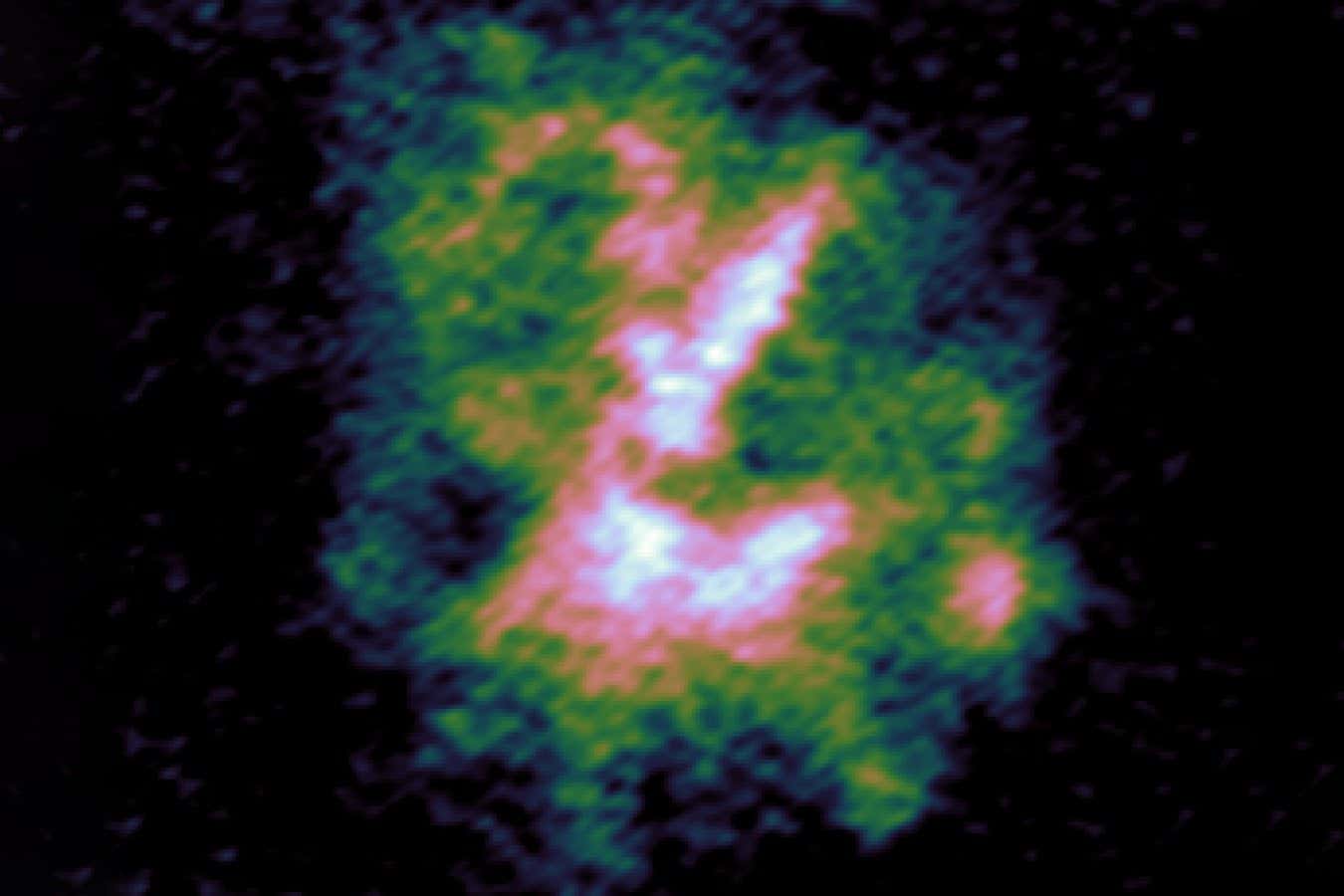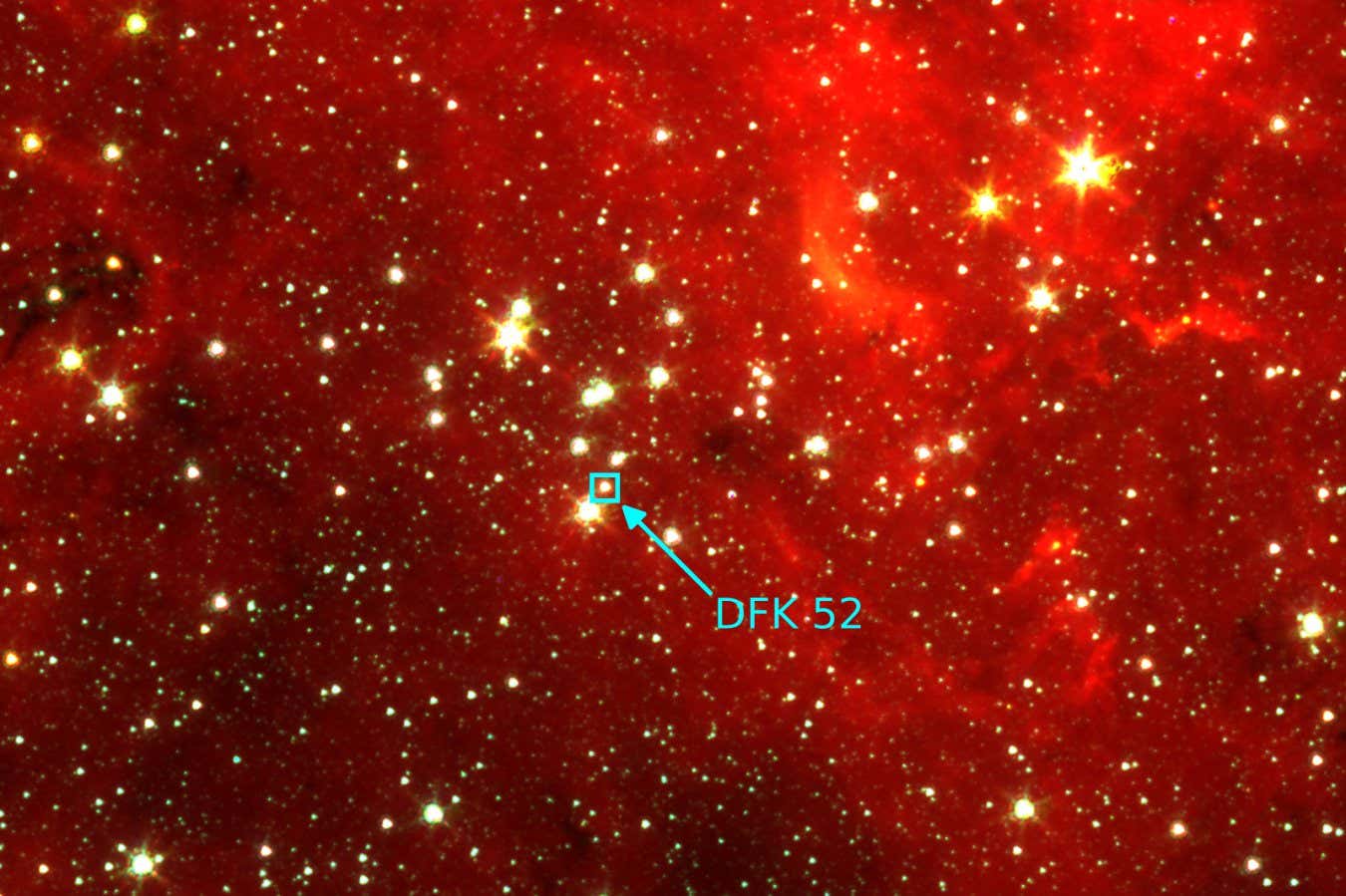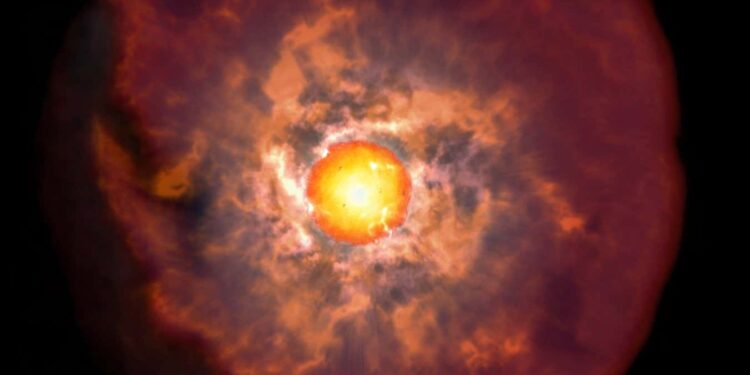
The bubble of gas around the red supergiant DFK 52
ALMA/Mark Siebert et al. 2025
A dying star is expelling a vast sphere of dust and gas around it that is about half as wide as our solar system. Astronomers are at a loss to explain it, as there is no known mechanism that could produce such a large amount of material from one star.
Red supergiants are the largest stars in the universe. They are the latter stage of fairly massive stars that have exhausted most of their fuel, just before exploding in a supernova. During this relatively short phase, the star rapidly expands in volume and expels large amounts of gas and dust that create a bubble around it, called the circumstellar medium, which can influence how the star explodes.
Mark Siebert at Chalmers University of Technology in Sweden and his colleagues have found that a red supergiant star called DFK 52 has the largest known circumstellar medium for this type of object, forming a bubble 50,000 times wider than the distance between Earth and the sun. Mysteriously, the star is also relatively dim, implying it has less energy than is thought to be required to make such a large debris field. “We have no idea how you can throw off this much material in that amount of time,” says Siebert.
DFK 52 had previously been observed with several different telescopes and astronomers found a relatively normal amount of gas being expelled from the star. But when Siebert and his team looked at the star with the Atacama Large Millimeter Array (ALMA) in Chile, which can observe wavelengths of light from much colder, older material, they found a far more extensive structure.
“We see this just enormous circumstellar medium around DFK 52, and it has this extremely, extremely complex geometry to it that we really can’t fully explain right now,” says Siebert. “We don’t know the full structure of this thing, but we know that it is just huge.”
As well as an intricate stream of bubbles moving throughout the structure, Siebert and his team identified a ring-like bar around halfway through the overall sphere that is expanding at nearly 30 kilometres per second. They calculated that this must have come from a dramatic event around 4000 years ago, which may be key to explaining how the star produced so much material.

The location of DFK 52 as seen by the Spitzer Space Telescope
NASA/JPL-Caltech/IPAC
One possible explanation for the large circumstellar medium is that the star was once much brighter and has dramatically dimmed – but red supergiants aren’t known to fluctuate in this way, says Siebert. It is also possible that another star may have been circling close around or even within the larger star and slinging off DFK 52’s material, but that would have produced a more symmetrical bubble, says Siebert. “We know that some additional source of energy has to be contributing to this, but we really don’t know what that would be,” he says.
“The outburst likely won’t change the star’s overall evolution, but it could have a significant impact on the appearance of its future supernova,” says Emma Beasor at Liverpool John Moores University, UK. “This is an exciting result and could help us understand some unusual supernovae.”

The world capital of astronomy: Chile
Experience the astronomical highlights of Chile. Visit some of the world’s most technologically advanced observatories and stargaze beneath some of the clearest skies on earth.
Topics:
Source link : https://www.newscientist.com/article/2489886-a-vast-bubble-around-a-dying-star-is-too-big-to-comprehend/?utm_campaign=RSS%7CNSNS&utm_source=NSNS&utm_medium=RSS&utm_content=home
Author :
Publish date : 2025-07-28 11:00:00
Copyright for syndicated content belongs to the linked Source.











